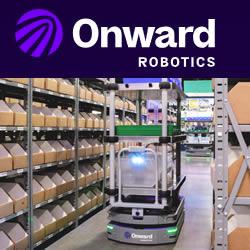Scientists develop bee model that will impact the development of aerial robotics
Billions Are Being Invested in a Robot That Americans Don't Want
The US service-sector jobs at risk from a robot revolution
Innovators offered chance to develop their ideas with world leading robotics manufacturer ABB Robotics
Bring 3D printed robots to life with 'Ziro' hand-controlled robotics kit
Face2Face: Real-time Face Capture and Reenactment of RGB Videos
Dmitry Grishin Doubles Down on Robotics With New $100 Million Fund
Over 1,000 Student-Led Robotics Teams Converge At VEX Worlds
9 open source robotics projects
Shockingly, Robots Are Really Bad at Waiting Tables
SCHAFT Unveils Awesome New Bipedal Robot at Japan Conference
Toyota Expands AI, Robotics Research to Third Facility
National Robotics Week delights kids
Robotics makes baby steps toward solving Japan's child care shortage
Cafe X Robotic Barista
Records 676 to 690 of 773
First | Previous | Next | Last
Mobile Robots - Featured Product

